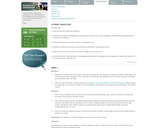
The lesson and activities teach students to recognize and explore bias and media stereotyping and be able to identify and analyze propaganda techniques in magazine and//or TV advertising.

The lesson and activities teach students to recognize and explore bias and media stereotyping and be able to identify and analyze propaganda techniques in magazine and//or TV advertising.
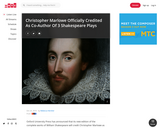
This is an article from National Public Radio which provides details of recent research which resulted in Christopher Marlowe being given co-authorship of three of Shakespeare's plays--Henry V Parts I, II and III. The article also interviews experts who disagree with these findings.
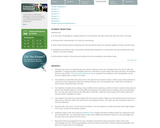
In this lesson, high school students look critically at the literary work "The Pit and the Pendulum" by Edgar Allan Poe and its 1961 film interpretation. They use prediction strategies to form and refine their opinions about the story line progression in each work. They read the short story, screen the film, discuss reactions to both works, and plan and write a persuasive essay analyzing the validity of the film interpretation. This lesson is ideally suited for students who have experience with persuasive writing, and it can be adapted to work with any literature-film pairing.
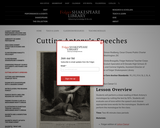
Students will perform a close reading of Mark Antony's monologue by cutting the text by 50%. Students will evaluate use of tone within the speech and choose appropriate tone words for the monologue. Students will perform the monologue for the class.
This activity could be used with other monologues as well as speeches.

This resource includes (1) a guided notetaking handout and (2) an accompanying powerpoint for Ray Bradbury's Fahreheit 451 that guides students in close reading for thematic evidence and analysis.

The resource is a full interview (approximately 17 minutes) with the author of Farewell to Manzanar, Jeanne Wakatsuki Houston. She discusses civil rights violations regarding the internment of Japanese Americans in camps in the western U.S. during WWII.
Students watch this author interview to supplement knowledge learned during the reading of the author's book. They will glean additional information about the time period, the history, the events, as well as the feelings of the author during the events of the book and after writing the book as she is now in the interview.
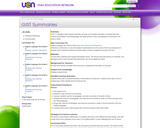
GIST is a strategy to help students write brief, accurate, and complete summaries of material they read. In this lesson students work together summarizing larger and larger portions of text, but keeping their summaries at 25 words or fewer. Students will be able to summarize portions of informational or literary text. Students will be able to work in small groups to think critically about and discuss text.

In Module 10.1, students engage with literature and nonfiction texts and explore how complex characters develop through their interactions with each other, and how these interactions develop central ideas such as parental and communal expectations, self-perception and performance, and competition and learning from mistakes.
Find the rest of the EngageNY ELA resources at https://archive.org/details/engageny-ela-archive .

In this module, students read, discuss, and analyze nonfiction and dramatic texts, focusing on how the authors convey and develop central ideas concerning imbalance, disorder, tragedy, mortality, and fate.
Find the rest of the EngageNY ELA resources at https://archive.org/details/engageny-ela-archive .

In this module, students will read, discuss, and analyze contemporary and classic texts, focusing on how complex characters develop through interactions with one another and how authors structure text to accomplish that development. There will be a strong emphasis on reading closely and responding to text dependent questions, annotating text, and developing academic vocabulary in context.
Find the rest of the EngageNY ELA resources at https://archive.org/details/engageny-ela-archive .

In this module, students engage with literature and nonfiction texts that develop central ideas of guilt, obsession, and madness, among others. Building on work with evidence-based analysis and debate in Module 1, students will produce evidence-based claims to analyze the development of central ideas and text structure. Students will develop and strengthen their writing by revising and editing, and refine their speaking and listening skills through discussion-based assessments.
Find the rest of the EngageNY ELA resources at https://archive.org/details/engageny-ela-archive .
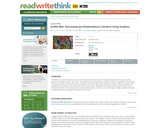
This lesson is used for discussion of a novel read by the whole class. Working individually and in groups, using symbols, drawings, shapes, and colors, alongside words and quotations, students construct a graphic of their section of the novel using an online tool and then on newsprint or butcher paper with crayons or markers. When all groups have completed their graphics, they will present them to the class, explaining why they chose the elements they used. Finished graphics can be displayed on a class bulletin board, on walls, or on a Web page. Finally, students will write an individual essay analyzing one element of the novel.
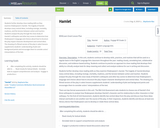
Students further develop close reading skills as they
examine Shakespeare’s Hamlet. The
tragedy of Hamlet develops many
central ideas, including revenge, mortality, madness, and the tension between
action and inaction. Students analyze the play through the close study of
Hamlet’s soliloquies and other key scenes to determine how Shakespeare’s
language and choices about how to structure the play impact character
development and central ideas. The showing of a filmed version of the play in
select lessons supplements students’ understanding of plot and background
points and encourages them to consider actors’ interpretations of the text.
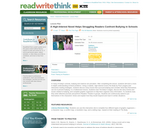
Students read a work of realistic fiction about bullying and gain understanding through writing, Readers Theatre, and discussion.
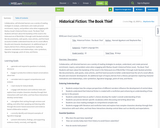
Collaborative, self-directed learners use a variety of reading strategies to analyze, understand, and create personal enrichment, inquiry, and problem solve when engaging with Markus Zusak's historical fiction novel, The Book Thief. Students will learn about the backdrop of the novel in the Holocaust era of World War II through multi-faceted activities like documentaries, web quests, news articles, and first-hand accounts to better understand how the set of a novel affects the plot and character development. An additional layer of inquiry derives from a literary perspective: exploring character motivations and relationships, color symbolism, figurative language, point-of-view, and theme.

Collaborative, self-directed learners use a variety of reading strategies to analyze, understand, and create personal enrichment, inquiry, and problem solve when engaging with Markus Zusak's historical fiction novel, The Book Thief. Students will learn about the backdrop of the novel in the Holocaust era of World War II through multi-faceted activities like documentaries, web quests, news articles, and first-hand accounts to better understand how the set of a novel affects the plot and character development. An additional layer of inquiry derives from a literary perspective: exploring character motivations and relationships, color symbolism, figurative language, point-of-view, and theme.
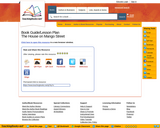
This is a great lesson to do either in the middle of the novel or as an introductory lesson. It is a great way for students to make connections to the content in the novel.

This webfolio is a follow-up assignment to an Honors English unit on Things Fall Apart by Chinua Achiebe. In this webfolio, students will take on the role of social scientists interested in learning more about the life of Africans in different parts of the continent. They will each have different aspects of African culture and life to research.The webfolio format emphasizes the power of teamwork and the Internet to learn all about an area of Africa. Each team will learn about one region of the continent, and then they will come together to get a better understanding of Africa as a whole by participating in and observing classroom presentations. The culminating project combines individual research and informational genre format into a first-person travel diary, imagining an actual trip through each region of Africa.
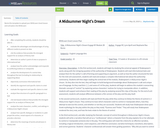
Remix this template to upload your WISELearn Grant lesson and unit plans into WISELearn
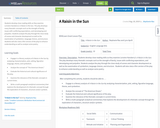
Students develop close reading skills as they examine Lorraine Hansberry's A Raisin in the Sun. The play develops many thematic concepts such as the strength of family, issues with conflicting expectations, and stereotyping and prejudice. Students analyze the play through the close study of scenes and character development as well as the examination of symbolism, language choices, and structure. Students will also view a film version of the play to enhance understanding as well as analyze some poetry.